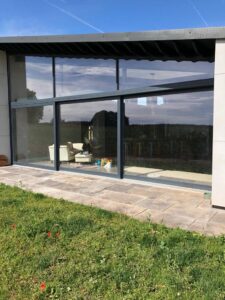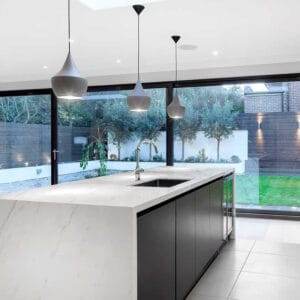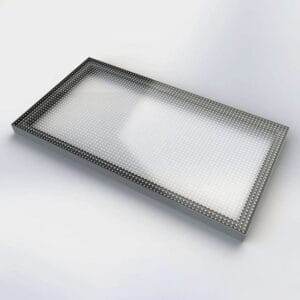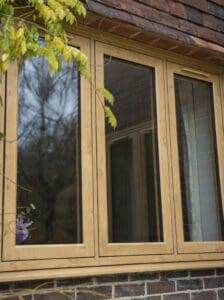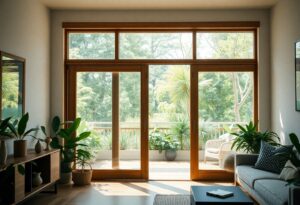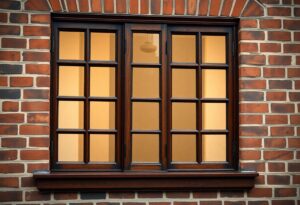Most homeowners take for granted the windows and doors that adorn their homes, yet their evolution reflects significant technological advancements and changing preferences. In this post, you’ll discover how materials have transitioned from traditional timber, valued for its charm and insulation, to smart aluminium, which offers modern aesthetics and energy efficiency. Understanding this evolution will help you make informed choices that enhance both the functionality and style of your living space.

The History of Windows and Doors
The history of windows and doors dates back thousands of years, with evidence of their existence found in ancient civilisations. Early windows were simply openings in walls, often covered with animal hides or cloth for protection. As architecture evolved, so did the materials and designs used, paving the way for the intricately crafted windows and doors we know today. This evolution reflects not only technological advancements but also changing architectural styles and personal preferences.
Traditional Timber Techniques
At the heart of traditional craftsmanship, timber techniques have been used for centuries to create robust and aesthetically pleasing windows and doors. Skilled artisans utilised locally sourced woods, employing methods like mortise and tenon joints, to ensure durability and elegance. The natural beauty of timber provided warmth and character to buildings, making it a preferred choice in architectural designs.
Transition to Modern Materials
Before the advent of modern materials, the potential for innovation in windows and doors was largely limited to wood and metal. However, the shift towards uPVC, aluminium, and glass began to transform the industry, resulting in products that offered enhanced insulation, reduced maintenance, and improved energy efficiency. This transition started to revolutionise both residential and commercial architecture, allowing for larger openings and more versatile designs.
Plus, the rise of modern materials like uPVC and aluminium not only improved functionality but also drastically reduced the weight of windows and doors while enhancing security features. These materials are resistant to decay and require minimal upkeep, making them far more convenient compared to traditional timber. Furthermore, modern designs allow for better thermal efficiency, ensuring your spaces remain comfortable year-round. You can also choose from a vast range of styles and finishes, giving you greater freedom to personalise your home or business. This evolution signifies a shift towards durability, safety, and sustainability in your windows and doors.
The Rise of Aluminium
Some might say that the rise of aluminium marked a significant shift in the building industry. As you explore The Evolution of R9 Windows & Doors in Modern Architecture, you’ll discover how aluminium has gained popularity for its durability and stylish finish, offering a modern alternative to traditional materials.
Advantages of Aluminium in Construction
Between its lightweight properties and remarkable strength, aluminium provides exceptional benefits for construction. This material is resistant to corrosion, requiring less maintenance over time, which can save you both effort and money. Energy efficiency is also a notable advantage, as aluminium can achieve excellent thermal performance when paired with appropriate insulation techniques.
Design Flexibility and Aesthetics
Below the surface of practical benefits, aluminium offers you impressive design flexibility and aesthetic appeal. With its ability to be shaped and customised, aluminium meets diverse architectural styles and preferences, allowing you to create unique, eye-catching features for your spaces.
Aluminium truly stands out in design flexibility. It can be crafted into sleek, minimalist profiles or more intricate designs, giving you the creativity to complement any architectural vision. Its variety of finishes and colours further enhance its aesthetic potential, allowing you to achieve the perfect style for your project. Because aluminium is both lightweight and durable, you can even realise large-scale installations without compromising on structural integrity, adding a contemporary touch to your spaces while ensuring lasting quality.
Smart Technology Integration
Even as the world embraces innovation, your home can become a hub of smart technology, with windows and doors that enhance both security and convenience. Through the integration of smart sensors and connectivity features, you can monitor and control your home environment from virtually anywhere, offering you peace of mind and improved energy efficiency.
Features of Smart Windows and Doors
Integration of smart technology brings an array of features to your windows and doors, such as automated locking systems, temperature sensors, and smart glass that adjusts its opacity. These modern advancements enable you to manage your home’s entry points and energy usage effortlessly, ensuring a comfortable living space while enhancing security.
Benefits of Home Automation
Home automation transforms your living experience, connecting various elements of your home for greater efficiency. You can control your windows and doors through mobile apps, allowing you to secure your home remotely and manage tasks such as adjusting lighting and heating with ease.
With smart home automation, you can enjoy enhanced security through real-time alerts and monitoring, ensuring that you are always informed about your home’s status. Furthermore, smart windows and doors can help you save on energy costs by optimising heating and cooling, creating a comfortable environment tailored to your needs. Embracing this technology not only modernises your home but also provides you with unparalleled convenience and peace of mind.
Energy Efficiency in Modern Designs
Once again, energy efficiency has become a paramount consideration in modern window and door designs. As technology advances, you will find that contemporary materials like aluminium not only offer aesthetic appeal but also enhance insulation. These innovations ensure your home remains warm in winter and cool in summer, ultimately reducing your energy bills and carbon footprint.
Insulation and Sustainability
Around the globe, the focus on sustainability is reshaping the way windows and doors are designed. You may find that modern installations incorporate components such as triple glazing and low-emissivity coatings, providing better thermal performance while contributing to eco-friendly building practices.
Regulatory Standards and Innovations
At the same time, regulatory standards are evolving to meet the demands of a greener future. You should be aware that compliance with energy-efficient standards not only benefits the environment but can also enhance your property’s market value, making modern upgrades a wise investment.
To achieve the latest regulatory standards, you must stay informed about local building codes and energy efficiency regulations. Updating your windows and doors to meet these requirements often involves incorporating innovative technologies, such as smart glazing, that adjust to weather conditions. Furthermore, failing to comply with regulations can lead to severe penalties, while ensuring your installations meet these standards can actively improve your home’s energy rating and, consequently, its appeal to potential buyers. By embracing these innovations, you play a significant role in promoting sustainability and energy efficiency in your own home.
Aesthetics and Architectural Trends
Your choice of windows and doors reflects not only personal taste but also the architectural trends of the time. With an increasing appreciation for both functionality and visual appeal, developments in materials have led to a harmonious blend of style and performance. Explore The Evolution of Window Technology: From 1950s to Today to understand how aesthetic preferences have evolved, shaping modern designs that complement a variety of architectural styles.
Contemporary Style Preferences
On examining today’s design landscape, you will find a strong inclination towards minimalist aesthetics, characterised by clean lines and an abundance of natural light. The use of large, unobtrusive windows and sleek door designs are prevalent, seamlessly blending indoor and outdoor spaces, resulting in sophisticated yet welcoming environments.
Customization Options
At the forefront of modern windows and doors is the opportunity for personalisation, allowing you to tailor designs to suit your unique style. Homeowners today can select from a variety of finishes, colours, and configurations, enhancing both the charm and functionality of their living spaces.
Aesthetics play an vital role in home design, where customisation options enable you to express your individuality. With a wealth of choices available, including size, style, and materials, you can achieve the perfect look that complements your property. Brands are increasingly offering bespoke solutions, ensuring that your windows and doors not only meet practical needs but also enhance the overall aesthetic appeal of your home.

Future Outlook
All signs indicate that the future of windows and doors will be shaped by innovation and sustainability. As building regulations become increasingly stringent, you can expect a rise in demand for energy-efficient solutions and smart technology. To explore the latest developments, you may find interest in our Blog: Timber-Look Joint – The Next Generation in Windows.
Emerging Materials and Technologies
On the horizon, you will find materials like hybrid composites and advanced polymers that promise enhanced durability and insulation. These innovations will cater to your desire for aesthetically pleasing yet functional designs, paving the way for a seamless integration of performance and style.
Predictions for the Industry
Technologies are expected to evolve rapidly, ushering in a new era of interconnected home solutions. You will likely see an increase in smart windows that adapt to environmental conditions, providing both comfort and efficiency.
It is anticipated that as the industry grows, you will encounter a higher focus on sustainability and eco-friendly materials. Moreover, the integration of smart technology will not just enhance convenience but also promote energy efficiency in your home. As regulations tighten, manufacturers will likely be compelled to innovate, ensuring you have options that not only suit your style but also contribute to a greener planet.
Conclusion
Conclusively, as you explore the transformation of windows and doors from traditional timber to smart aluminium, it’s clear that innovation has significantly enhanced both functionality and aesthetics. Your choice reflects not only modern design but also energy efficiency and durability, offering you long-lasting solutions for your home. Embracing these advancements allows you to enjoy a harmonious blend of style and practicality, ensuring your living space remains both inviting and efficient.
FAQ
Q: What are the primary differences between traditional timber and modern aluminium windows and doors?
A: The primary differences between traditional timber and modern aluminium lie in their materials, maintenance, and thermal efficiency. Timber offers classic aesthetics and is a natural insulator but requires regular maintenance to prevent decay and damage from the elements. In contrast, aluminium is highly durable, resistant to warping and corrosion, and requires minimal upkeep. Additionally, modern aluminium designs often come with thermal breaks, improving their energy efficiency significantly compared to traditional timber frames.
Q: How has the design of windows and doors evolved over the years?
A: The design of windows and doors has evolved considerably, shifting from the ornate styles of the past to sleek, modern lines that focus on minimalism and functionality. Historically, window and door designs reflected architectural styles of their time, incorporating decorative mouldings and features. Today, there’s a trend toward larger glass panels to increase natural light and provide uninterrupted views, paired with slim profiles for a contemporary look. Innovations in technology also allow for greater design flexibility and customisation, catering to individual tastes.
Q: What role does energy efficiency play in the evolution of window and door materials?
A: Energy efficiency plays a significant role in the evolution of window and door materials. With growing awareness of environmental impact and rising energy costs, manufacturers are developing more energy-efficient products. Modern aluminium windows often incorporate better insulation and advanced glazing technologies, resulting in improved thermal performance. Timber, while traditionally a good insulator, can now be treated and enhanced to offer higher energy efficiency. This evolution aims to reduce energy consumption and provide comfort for homeowners.
Q: Are smart features being integrated into windows and doors, and if so, how?
A: Yes, smart features are increasingly being integrated into windows and doors, enhancing their functionality and convenience. For instance, smart windows can automatically tint themselves, adjust to light conditions, or allow for remote control via mobile applications. Moreover, some modern doors come equipped with smart locking systems that offer enhanced security and remote access capabilities. These advancements reflect a broader trend towards home automation, enabling users to manage their windows and doors seamlessly within their smart home systems.
Q: What are the advantages of aluminium over timber for windows and doors in modern construction?
A: The advantages of aluminium over timber in modern construction include lower maintenance needs, increased durability, and superior design flexibility. Aluminium does not crack, warp, or swell like timber, ensuring longevity and consistent performance. Furthermore, it is often lighter, allowing for larger window designs and doors that provide expansive views without compromising structural integrity. Additionally, aluminium can be coated in various colours and finishes, allowing for greater custom design options that complement contemporary architectural trends.

